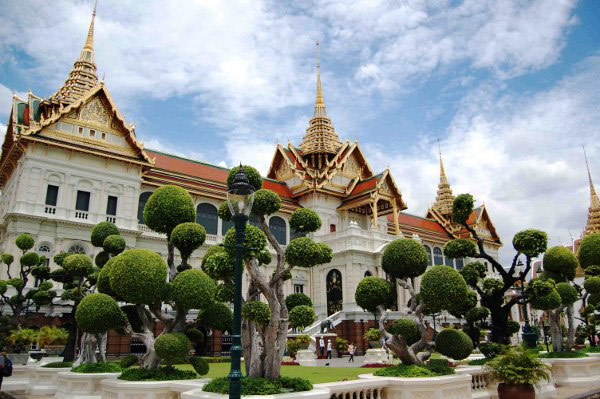Week7
Thai Cultures
Thailand is located at the meeting point of the two great cultural systems of Asia, Chinese and Indian. In everyday life, Chinese culture has mixed very well with the Thai, whereas in Thai court culture, which has been based mainly on Buddhism and Brahmanism, India has exerted a strong influence. Thai culture can be divided into 3 aspects: linguistic culture, court culture, and traditional culture.
Court Culture
Court culture refers to the conception of beauty, perfection and harmony in the fine arts, including painting, sculpture, architecture, literature, drama and music. In the old days most of these originated in or received the patronage of the royal court and nobility. Most of the works served the Buddhist religion. Their styles were influenced by the Indians through the Mons and Khmers, and then were blended and developed in unique forms recognized as Thai.
Court Culture : Painting
Classical Thai painting is mostly confined to mural paintings inside Buddhist temples and palaces. They are idealistic and the themes frequently depicted are those related to Buddhism, such as the Buddha's life stories, stories of the three worlds (heaven, earth and hell), and also those concerning customs and traditions. The subjects of the paintings reflect different purposes: to beautify and dignify the places of worship, to promote Buddhism, and to educate people through pictures.
Court Culture : Architecture
Apart from the royal palace buildings, classical Thai architecture can be found in monastic monuments, pagodas and temples which have been the focal points of Thai community activities for centuries. Admitting Indian, Khmer and other influences such as Chinese and Burmese, Thai architects developed their own distinctive style of sloping multitiered roof-tops and soaring pointed towers, intricately ornamented with carved wood and stucco, gilded lacquer work, mother-of-pearl inlay, Chinese porcelain fragments and colour glass mosaic. Under the tropical sun, these buildings give out an artistic harmony of flamboyance and serenity.
Examples of Thai architecture are seen in Wat Phra Kaeo, Wat Pho, Wat Suthat, the Grand Palace, etc.


